
Ever worry about your gambling?

Are online gambling and sports betting new to your area? Are gambling advertisements catching your eye? Have you noticed sports and news shows covering the spread? Recent changes in laws have made gambling widely accessible, and its popularity has soared.
Occasional bets are rarely an issue. But uncontrolled gambling can lead to financial, psychological, physical, and social consequences, some of which are extreme. Understanding whether gambling is becoming a problem in your life can help you head off the worst of these issues and refocus on having more meaning, happiness, and psychological richness in your life. Gambling screening is a good first step.
Can you screen yourself for problem gambling?
Yes. Screening yourself is easy. The Brief Biosocial Gambling Screen (note: automatic download) is a validated way to screen for gambling disorder. It has three yes-or-no questions. Ask yourself:
- During the past 12 months, have you become restless, irritable, or anxious when trying to stop/cut down on gambling?
- During the past 12 months, have you tried to keep your family or friends from knowing how much you gambled?
- During the past 12 months, did you have such financial trouble as a result of your gambling that you had to get help with living expenses from family, friends, or welfare?
What do your answers mean?
Answering yes to any one of these questions suggests that you are at higher risk for experiencing gambling disorder. Put simply, this is an addiction to gambling. Like other expressions of addiction, for gambling this includes loss of control, craving, and continuing despite bad consequences. Unique to gambling, it also often means chasing your losses.
A yes doesn’t mean that you are definitely experiencing a problem with gambling. But it might be valuable for you to seek a more in-depth assessment of your gambling behavior. To find an organization or person qualified to help, ask a health care provider, your local department of public health, or an advocacy group like the National Council on Problem Gambling.
Are you ready for change?
Your readiness to change a behavior matters when deciding the best first steps for making a change. If someone asks you whether you want to change your gambling, what would you say?
|
I never think about my gambling. |
Sometimes I think about gambling less. |
I have decided to gamble less. |
I am already trying to cut back on my gambling. |
I changed my gambling: I now do not gamble, or gamble less than before. |
Depending on your answer, you might seek out different solutions. What’s most important initially is choosing a solution that feels like the right fit for you.
What if you don’t feel ready to change? If you haven’t thought about your gambling or only occasionally think about changing your gambling, you might explore lower intensity actions. For example, you could
- read more about how gambling could create a problem for you
- listen to stories of those who have lived experience with gambling disorder.
If you are committed to making a change or are already trying to change, you might seek out more engaging resources and strategies to support those decisions, like attending self-help groups or participating in treatment.
Read on for more details on choices you might make.
What options for change are available if you want to continue gambling?
If you want to keep gambling in some way, you might want to stick to lower-risk gambling guidelines:
- gamble no more than 1% of household income
- gamble no more than four days per month
- avoid regularly gambling at more than two types of games, such as playing the lottery and betting on sports.
Other ways to reduce your risk of gambling harm include:
- Plan ahead and set your own personal limits.
- Keep your entertainment budget in mind if you decide to gamble.
- Consider leaving credit cards and debit cards at home and use cash instead.
- Schedule other activities directly after your gambling to create a time limit.
- Limit your use of alcohol and other drugs if you decide to gamble.
What are easy first steps toward reducing or stopping gambling?
If you’re just starting to think about change, consider learning more about gambling, problem gambling, and ways to change from
- blogs, like The BASIS
- books like Change Your Gambling, Change Your Life
- podcasts like After Gambling, All-In, and Fall In, which offer expert interviews, personal recovery stories, and more.
Some YouTube clips demystify gambling, such as how slot machines work, the limits of skill and knowledge in gambling, and how gambling can become an addiction. These sources might help you think about your own gambling in new ways, potentially identifying behaviors that you need to change.
What are some slightly more active steps toward change?
If you’re looking for a slightly more active approach, you can consider engaging in traditional self-help experiences such as helplines and chatlines or Gamblers Anonymous.
Another option is self-help workbooks. Your First Step to Change is a popular workbook that provides information about problem gambling, self-screening exercises for gambling and related conditions like anxiety and depression, and change exercises to get started. A clinical trial of this resource suggested that users were more likely than others to report having recently abstained from gambling.
Watch out for gambling misinformation
As you investigate options, keep in mind that the quality of information available can vary and may even include misinformation. Misinformation is incorrect or misleading information. Research suggests that some common types of gambling misinformation might reinforce harmful beliefs or risky behaviors.
For example, some gambling books, websites, and other resources exaggerate your likelihood of winning, highlight win and loss streaks as important (especially for chance-based games like slots), and suggest ways to change your luck to gain an edge. These misleading ideas can help you to believe you’re more likely to win than you actually are, and set you up for failure.
The bottom line
Taking a simple self-screening test can start you on a journey toward better gambling-related health. Keep in mind that change can take time and won’t necessarily be a straight path.
If you take a step toward change and then a step back, nothing is stopping you from taking a step forward again. Talking with a care provider and getting a comprehensive assessment can help you understand whether formal treatment for gambling is a promising option for you.
About the Author

Debi LaPlante, PhD, Contributor
Dr. Debi LaPlante is director of the division on addiction at the Cambridge Health Alliance, and an associate professor of psychiatry at Harvard Medical School. She joined the division in 2001 and is involved with its … See Full Bio View all posts by Debi LaPlante, PhD
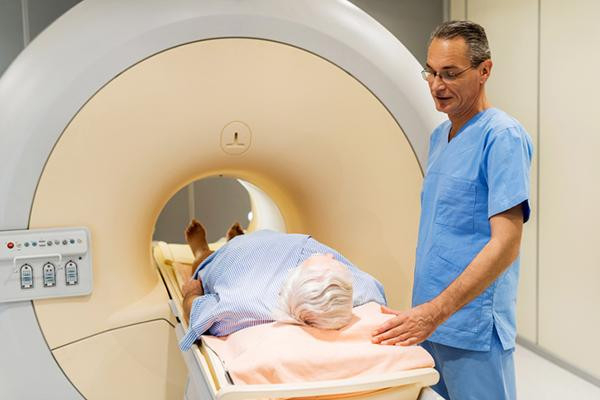
Could imaging scans replace biopsies during prostate cancer screening?

Abnormal results on a prostate-specific antigen (PSA) screening test for cancer are typically followed by a systematic biopsy. During that procedure, doctors use a long needle to extract roughly a dozen samples from the prostate while looking at the gland on an ultrasound machine. Those samples can then be checked for cancer under a microscope.
Limitations and concerns
But systematic biopsies can be problematic. A major concern is that they overdiagnose low-grade, slow-growing tumors that might never become life-threatening, thereby leading to unnecessary treatments.
Researchers are seeking alternatives to the systematic biopsy in men flagged by PSA screening. One option is to start with a magnetic resonance imaging (MRI) scan of the prostate, and then focus the biopsy only on areas that look suspicious for cancer. This is called an MRI-targeted biopsy, and it’s becoming increasingly common.
Could an MRI miss early-stage cancer that later turns out to be incurable? This is an outstanding worry, especially since systematic biopsies sometimes find newly-forming cancer that MRIs aren’t yet able to detect. Indeed, systematic and targeted biopsies are often given together to boost the odds of finding clinically significant disease that may need immediate treatment.
Methodology
Now, a large Swedish study provides encouraging evidence favoring the MRI-only approach.
The team invited 38,316 men ranging from 50 to 60 years in age to undergo PSA screening. If a man’s PSA level was 3.0 nanograms per milliliter (ng/mL) or higher, then he was enrolled into the study. The investigators wound up with 13,153 men who were randomly distributed between two groups:
- Systematic biopsy group: All the men in this group got a systematic biopsy plus an MRI. If a man’s MRI was positive for suspicious lesions, then he also got a targeted biopsy.
- MRI-targeted biopsy group: All of the men in this group got an MRI, but none got a systematic biopsy. Men with suspicious lesions on MRI got a targeted biopsy.
This initial screening round was followed by repeat screening rounds — all following the same protocols — at two-, four-, and eight-year-intervals.
What the study showed
After a median follow-up of 3.9 years (starting from and including the first screening round), prostate cancer had been detected in 185 men from the MRI-targeted group and 298 men from the systematic biopsy group. Systematic biopsies generated more clinically insignificant cancer diagnoses — 159 compared to 68 in the MRI-targeted group. During the first screening round, “The risk of such a diagnosis was 51% lower in the MRI-targeted biopsy group than the systematic biopsy group,” the authors wrote.
The authors emphasized that omitting biopsies in patients with MRI-negative results cut diagnoses of clinically insignificant cancer, meaning cancer that is slow-growing and may never need treatment, by more than half. “And importantly, the associated risk of detecting clinically significant cancer during follow-up and at later screening visits was very low in both groups,” said Dr. Jonas Hugosson, chief urologist at the University of Gothenberg and the study’s first author. “A total of 14 such cases (0.2 % of men who participated) were diagnosed in the systematic biopsy group and eight (0.1 %) in the MRI-targeted biopsy group.”
Commentary from experts
“This study provides encouraging — though very early — data that supports the increasing use of MRI as the first diagnostic modality, following evaluation of an abnormal PSA value,” said Dr. Marc Garnick, the Gorman Brothers Professor of Medicine at Harvard Medical School and Beth Israel Deaconess Medical Center, and editor-in-chief of the Harvard Medical School Guide to Prostate Diseases. “The practice of not automatically going to prostate needle biopsy when an abnormal PSA is detected has gained in popularity in Europe, and this study may help increase its usefulness in the United States.”
“While these results are encouraging, the decision to omit biopsy in men with a negative MRI must be individualized based on the risk of detecting prostate cancer,” added Dr. Boris Gershman, a urologist at Beth Israel Deaconess Medical Center and an assistant professor at Harvard Medical School focusing on prostate and bladder cancer. “For example, biopsy may still be considered in men with markedly elevated PSA, even if the prostate MRI does not identify any lesions.”
About the Author

Charlie Schmidt, Editor, Harvard Medical School Annual Report on Prostate Diseases
Charlie Schmidt is an award-winning freelance science writer based in Portland, Maine. In addition to writing for Harvard Health Publishing, Charlie has written for Science magazine, the Journal of the National Cancer Institute, Environmental Health Perspectives, … See Full Bio View all posts by Charlie Schmidt
About the Reviewer

Marc B. Garnick, MD, Editor in Chief, Harvard Medical School Annual Report on Prostate Diseases; Editorial Advisory Board Member, Harvard Health Publishing
Dr. Marc B. Garnick is an internationally renowned expert in medical oncology and urologic cancer. A clinical professor of medicine at Harvard Medical School, he also maintains an active clinical practice at Beth Israel Deaconess Medical … See Full Bio View all posts by Marc B. Garnick, MD

Evoking calm: Practicing mindfulness in daily life helps

It’s easy to say you simply don’t have time to be mindful. With so much going on in daily life, who has time to stop and be present? But everyone has at least 10 minutes to spare to practice mindfulness.
The point of these brief, daily reflections is to help you tap into calmness whenever life gets too hairy. Practicing everyday mindfulness can also improve your memory and concentration skills and help you feel less distracted and better able to manage stress . And mindfulness tools have been successfully incorporated into treatments for anxiety and depression.
There is more than one way to practice mindfulness. Still, any mindfulness technique aims to achieve a state of alert, focused, relaxed consciousness by deliberately paying attention to thoughts and sensations without passing judgment on them. This allows the mind to focus on the present moment with an attitude of acceptance.
Three easy mindfulness exercises to try
Here are three simple exercises you can try whenever you need a mental break, emotional lift, or just want to pause and appreciate everything around you. Devote 10 minutes a day to them and see how the experience changes your outlook. It’s time well spent.
Simple meditation
A quick and easy meditation is an excellent place to begin practicing mindfulness.
- Sit on a straight-backed chair or cross-legged on the floor.
- Focus on an aspect of your breathing, such as the sensations of air flowing into your nostrils and out of your mouth, or your belly rising and falling as you inhale and exhale.
- Once you’ve narrowed your concentration in this way, begin to widen your focus. Become aware of sounds, sensations, and ideas. Embrace and consider each without judgment.
- If your mind starts to race, return your focus to your breathing. Then expand your awareness again.
- Take as much time as you like: one minute, or five, or 10 — whatever you’re comfortable with. Experts in mindfulness meditation note that the practice is most helpful if you commit to a regular meditation schedule.
Open awareness
Another approach to mindfulness is “open awareness,” which helps you stay in the present and truly participate in specific moments in life. You can choose any task or moment to practice open awareness, such as eating, taking a walk, showering, cooking a meal, or working in the garden. When you are engaged in these and other similar routine activities, follow these steps.
- Bring your attention to the sensations in your body, both physical and emotional.
- Breathe in through your nose, allowing the air to fill your lungs. Let your abdomen expand fully. Then breathe out slowly through your mouth.
- Carry on with the task at hand, slowly and with deliberation.
- Engage each of your senses, paying close attention to what you can see, hear, feel, smell, and taste.
- Try “single-tasking,” bringing your attention as fully as possible to what you’re doing.
- Allow any thoughts or emotions that arise to come and go, like clouds passing through the sky.
- If your mind wanders away from your current task, gently refocus your attention back to the sensation of the moment.
Body awareness
Another way to practice mindfulness is to focus your attention on other thoughts, objects, and sensations. While sitting quietly with your eyes closed, channel your awareness toward each of the following:
- Sensations: Notice subtle feelings such as an itch or tingling without judgment, and let them pass. Notice each part of your body in succession from head to toe.
- Sights and sounds: Notice sights, sounds, smells, tastes, and touches. Name them “sight,” “sound,” “smell,” “taste,” or “touch” without judgment and let them go.
- Emotions: Allow emotions to be present without judging them. Practice a steady and relaxed naming of emotions: “joy,” “anger,” “frustration.”
- Urges: When you feel a craving or an urge (for instance, to eat excess food or practice an unwanted behavior), acknowledge the desire and understand that it will pass. Notice how your body feels as the craving enters. Replace the wish for the craving to go away with the specific knowledge that it will subside.
About the Author

Matthew Solan, Executive Editor, Harvard Men's Health Watch
Matthew Solan is the executive editor of Harvard Men’s Health Watch. He previously served as executive editor for UCLA Health’s Healthy Years and as a contributor to Duke Medicine’s Health News and Weill Cornell Medical College’s … See Full Bio View all posts by Matthew Solan
About the Reviewer
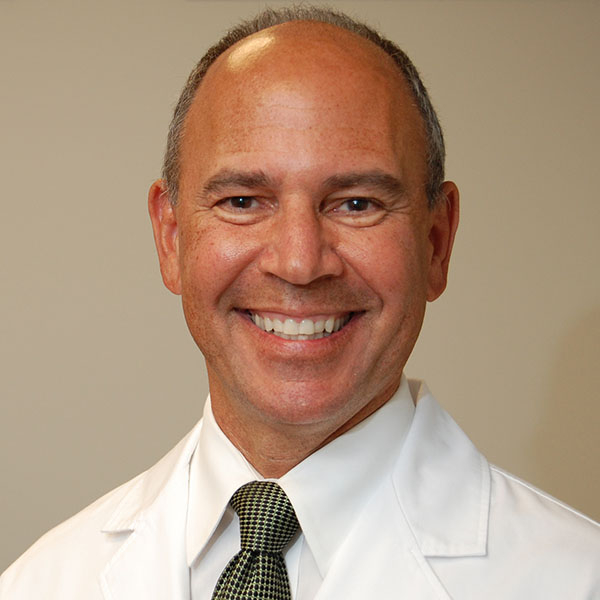
Howard E. LeWine, MD, Chief Medical Editor, Harvard Health Publishing; Editorial Advisory Board Member, Harvard Health Publishing
Dr. Howard LeWine is a practicing internist at Brigham and Women’s Hospital in Boston, Chief Medical Editor at Harvard Health Publishing, and editor in chief of Harvard Men’s Health Watch. See Full Bio View all posts by Howard E. LeWine, MD
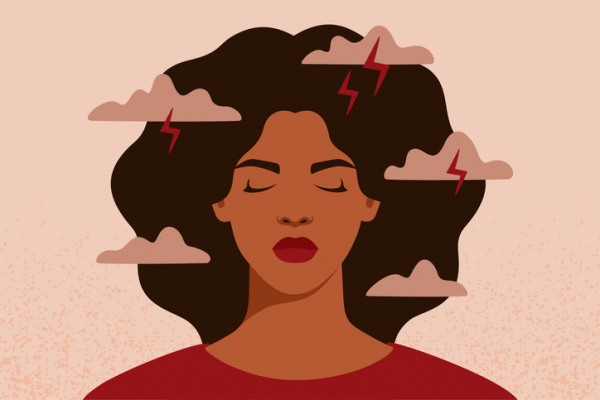
Which migraine medications are most helpful?

If you suffer from the throbbing, intense pain set off by migraine headaches, you may well wonder which medicines are most likely to offer relief. A recent study suggests a class of drugs called triptans are the most helpful option, with one particular drug rising to the top.
The study drew on real-world data gleaned from more than three million entries on My Migraine Buddy, a free smartphone app. The app lets users track their migraine attacks and rate the helpfulness of any medications they take.
Dr. Elizabeth Loder, professor of neurology at Harvard Medical School and chief of the Division of Headache at Brigham and Women’s Hospital, helped break down what the researchers looked at and learned that could benefit anyone with migraines.
What did the migraine study look at?
Published in the journal Neurology, the study included self-reported data from about 278,000 people (mostly women) over a six-year period that ended in July 2020. Using the app, participants rated migraine treatments they used as “helpful,” “somewhat helpful,” or “unhelpful.”
The researchers looked at 25 medications from seven drug classes to see which were most helpful for easing migraines. After triptans, the next most helpful drug classes were ergots such as dihydroergotamine (Migranal, Trudhesa) and anti-emetics such as promethazine (Phenergan). The latter help ease nausea, another common migraine symptom.
“I’m always happy to see studies conducted in a real-world setting, and this one is very clever,” says Dr. Loder. The results validate current guideline recommendations for treating migraines, which rank triptans as a first-line choice. “If you had asked me to sit down and make a list of the most helpful migraine medications, it would be very similar to what this study found,” she says.
What else did the study show about migraine pain relievers?
Ibuprofen, an over-the-counter pain reliever sold as Advil and Motrin, was the most frequently used medication in the study. But participants rated it “helpful” only 42% of the time. Only acetaminophen (Tylenol) was less helpful, helping just 37% of the time. A common combination medication containing aspirin, acetaminophen, and caffeine (sold under the brand name Excedrin) worked only slightly better than ibuprofen, or about half the time.
When researchers compared helpfulness of other drugs to ibuprofen, they found:
- Triptans scored five to six times more helpful than ibuprofen. The highest ranked drug, eletriptan, helped 78% of the time. Other triptans, including zolmitriptan (Zomig) and sumatriptan (Imitrex), were helpful 74% and 72% of the time, respectively. In practice, notes Dr. Loder, eletriptan seems to be just a tad better than the other triptans.
- Ergots were rated as three times more helpful than ibuprofen.
- Anti-emetics were 2.5 times as helpful as ibuprofen.
Do people take more than one medicine to ease migraine symptoms?
In this study, two-thirds of migraine attacks were treated with just one drug. About a quarter of the study participants used two drugs, and a smaller number used three or more drugs.
However, researchers weren’t able to tease out the sequence of when people took the drugs. And with anti-nausea drugs, it’s not clear if people were rating their helpfulness on nausea rather than headache, Dr. Loder points out. But it’s a good reminder that for many people who have migraines, nausea and vomiting are a big problem. When that’s the case, different drug formulations can help.
Are pills the only option for migraine relief?
No. For the headache, people can use a nasal spray or injectable version of a triptan rather than pills. Pre-filled syringes, which are injected into the thigh, stomach, or upper arm, are underused among people who have very rapid-onset migraines, says Dr. Loder. “For these people, injectable triptans are a game changer because pills don’t work as fast and might not stay down,” she says.
For nausea, the anti-emetic ondansetron (Zofran) is very effective, but one of the side effects is headache. You’re better off using promethazine or prochlorperazine (Compazine), both of which treat nausea but also help ease headache pain, says Dr. Loder.
Additionally, many anti-nausea drugs are available as rectal suppositories. This is especially helpful for people who have “crash” migraines, which often cause people to wake up vomiting with a migraine, she adds.
What are the limitations of this migraine study?
The data didn’t include information about the timing, sequence, formulation, or dosage of the medications. It also omitted two classes of newer migraine medications — known as gepants and ditans — because there was only limited data on them at the time of the study. These options include
- atogepant (Qulipta) and rimegepant (Nurtec)
- lasmiditan (Reyvow).
“But based on my clinical experience, I don’t think that any of these drugs would do a lot better than the triptans,” says Dr. Loder.
Another shortcoming is the study population: a selected group of people who are able and motivated to use a migraine smartphone app. That suggests their headaches are probably worse than the average person, but that’s exactly the population for whom this information is needed, says Dr. Loder.
“Migraines are most common in young, healthy people who are trying to work and raise children,” she says. It’s good to know that people using this app rate triptans highly, because from a medical point of view, these drugs are well tolerated and have few side effects, she adds.
Are there other helpful takeaways?
Yes. In the study, nearly half the participants said their pain wasn’t adequately treated. A third reported using more than one medicine to manage their migraines.
If you experience these problems, consult a health care provider who can help you find a more effective therapy. “If you’re using over-the-counter drugs, consider trying a prescription triptan,” Dr. Loder says. If nausea and vomiting are a problem for you, be sure to have an anti-nausea drug on hand.
She also recommends using the Migraine Buddy app or the Canadian Migraine Tracker app (both are free), which many of her patients find helpful for tracking their headaches and triggers.
About the Author

Julie Corliss, Executive Editor, Harvard Heart Letter
Julie Corliss is the executive editor of the Harvard Heart Letter. Before working at Harvard, she was a medical writer and editor at HealthNews, a consumer newsletter affiliated with The New England Journal of Medicine. She … See Full Bio View all posts by Julie Corliss
About the Reviewer
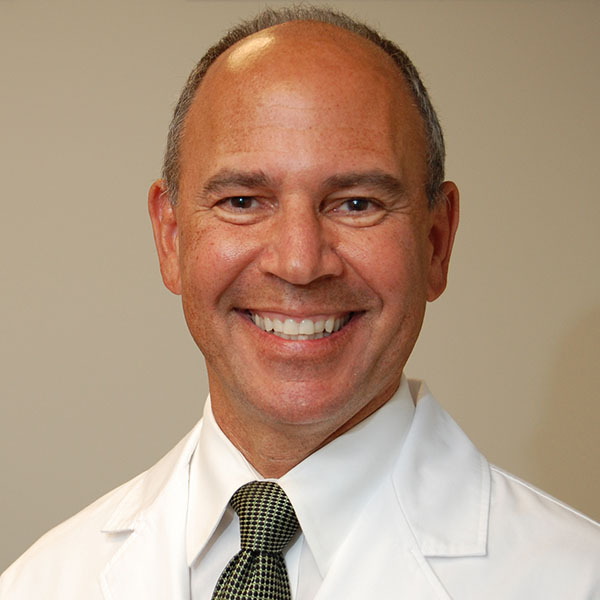
Howard E. LeWine, MD, Chief Medical Editor, Harvard Health Publishing; Editorial Advisory Board Member, Harvard Health Publishing
Dr. Howard LeWine is a practicing internist at Brigham and Women’s Hospital in Boston, Chief Medical Editor at Harvard Health Publishing, and editor in chief of Harvard Men’s Health Watch. See Full Bio View all posts by Howard E. LeWine, MD
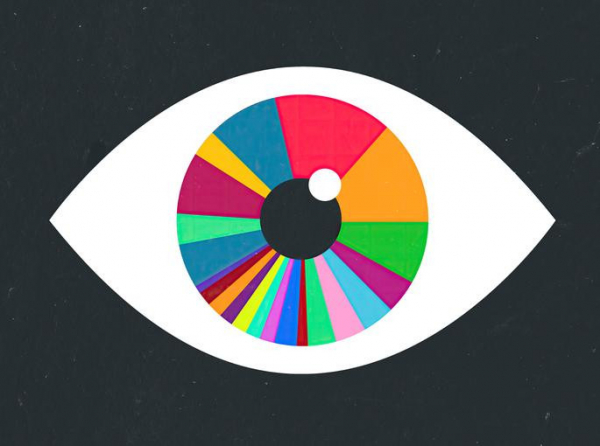
Color-changing eye drops: Are they safe?

As the adage goes, the eyes are the windows to the soul. So what does it mean to wish yours were a different color?
Apparently enough people share this desire to create a bustling market for color-changing eye drops, which are making the rounds through social media and online retailers.
Personalizing eye color might sound tempting, especially for younger people and those who enjoy experimenting with elements of fashion or style. But are over-the-counter, color-changing eye drops safe? The answer is a hard no, according to the American Academy of Ophthalmology (AAO), which recently issued a warning against “eye color-changing solutions.”
Why shouldn’t you try color-changing eye drops?
Color-changing eye drops aren’t approved by the FDA, haven’t been tested for safety or effectiveness, and could potentially damage people’s eyes, the AAO warns.
“It might seem benign when you see a product like this online,” says Dr. Michael Boland, an associate professor of ophthalmology and glaucoma specialist at Harvard-affiliated Mass Eye and Ear. “People think, ‘Why not try it?’.” “But there’s no way to know what’s in these bottles and no oversight over how they’re being made.”
How do the eye drops work?
That’s not clear. Companies manufacturing the drops claim the products adjust levels of melanin in the iris, the colored portion of the eyeball. Purportedly, the effects begin to be visible within hours and can last for a week or longer. If a user wants enduring results, they’ll need to continue using the product.
But these claims skirt a complete lack of evidence that the drops have any effects on the iris, much less the desired effects, Dr. Boland says.
“I’ve found zero descriptions of how they work in terms of a plausible mechanism,” he says. The ingredients list includes things that might be found in other eye drops or drugs or even cosmetics, but nothing that would actually change your eye color.”
How might the drops hurt your eyes?
The AAO lists a variety of potential safety risks from using these products or any other unregulated eye drops, including:
- inflammation
- infection
- light sensitivity
- increased eye pressure or glaucoma
- permanent vision loss.
“All of those problems are possible, since we don’t have any real idea what’s in these bottles,” Dr. Boland says. “The biggest concern is damage to the cornea, the clear part of the front of the eye. If the cornea is damaged by the chemicals in those bottles, you might lose vision.”
Are there safe alternatives to change eye color?
Still hankering for a way to get, say, Taylor Swift’s electric blue eyes or Julia Roberts’ golden brown peepers? There is a trustworthy option, Dr. Boland says: colored contact lenses. But he recommends choosing that option with caution.
“Professionally prescribed and dispensed contact lenses are a safe way to change your eye color,” he says. “But don’t buy them online. Get them from a reputable source to make sure they’ve been regulated and evaluated as safe, because contacts can damage the eye if they’re not designed properly or kept clean.”
About the Author

Maureen Salamon, Executive Editor, Harvard Women's Health Watch
Maureen Salamon is executive editor of Harvard Women’s Health Watch. She began her career as a newspaper reporter and later covered health and medicine for a wide variety of websites, magazines, and hospitals. Her work has … See Full Bio View all posts by Maureen Salamon
About the Reviewer
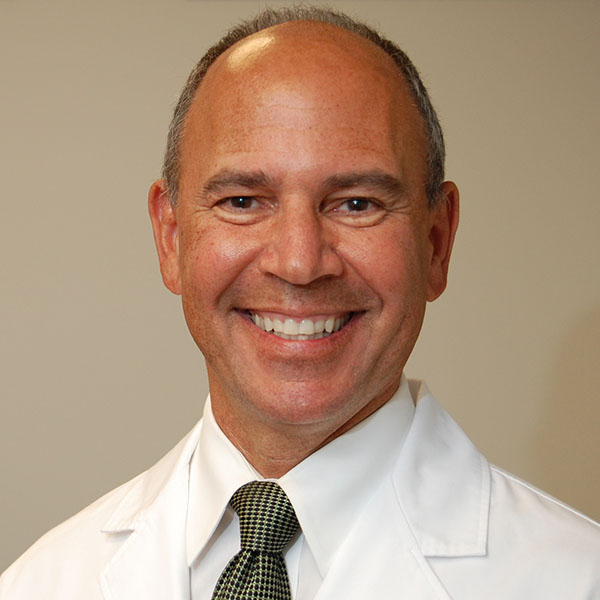
Howard E. LeWine, MD, Chief Medical Editor, Harvard Health Publishing; Editorial Advisory Board Member, Harvard Health Publishing
Dr. Howard LeWine is a practicing internist at Brigham and Women’s Hospital in Boston, Chief Medical Editor at Harvard Health Publishing, and editor in chief of Harvard Men’s Health Watch. See Full Bio View all posts by Howard E. LeWine, MD

Harvard Health Ad Watch: Got side effects? There’s a medicine for that

It’s an unfortunate reality: all medicines can cause side effects. While there are a few tried-and-true ways to deal with drug side effects, here’s a less common option to consider: adding a second medication.
That’s the approach taken with valbenazine (Ingrezza), a drug approved for a condition called tardive dyskinesia that’s caused by certain medicines, most of which are for mental health. Let’s dive into what TD is, how this drug is advertised, and what else to consider if a medicine you take causes TD.
What is tardive dyskinesia?
Tardive dyskinesia (TD) is a condition marked by involuntary movements of the face or limbs, such as rapid eye blinking, grimacing, or pushing out the tongue. TD is caused by long-term use of certain drugs, many of which treat psychosis.
TD may be irreversible. Early recognition is key to improvement and preventing symptoms from getting worse. If you take antipsychotic medicines or other drugs that can cause TD, tell your prescribing health care provider right away about any worrisome symptoms.
A sidewalk sale, a cookout in the park, and a pitch
One ad for Ingrezza starts with a young man working with customers at a sidewalk sale. Though his mental health is much better, he says, now he’s suffering with TD, a condition “that can be caused by some mental health meds.” A spotlight shines on his hands as he fumbles and drops an instant camera he’s selling. He seems embarrassed and his customers look perplexed.
Next we see a young woman at a cookout in a park. The mysterious spotlight is trained on her face as she blinks and grimaces involuntarily. Her voiceover explains that she feels like her involuntary movements are “always in the spotlight.”
Later these two happily interact with others, their movement problems much improved. A voiceover tells us Ingrezza is the #1 treatment for adults with TD. The dose — “always one pill, once a day” — can improve unwanted movements in seven out of 10 people. And people taking Ingrezza can stay on most mental health meds.
That’s the pitch. The downsides come next.
What are the side effects of this drug to control a side effect?
As required by the FDA, the ad lists common and serious side effects of Ingrezza, including
- sleepiness (the most common side effect)
- depression, suicidal thoughts, or actions
- heart rhythm problems
- allergic reactions, which can be life-threatening
- fevers, stiff muscles, or problems thinking, which may be life threatening
- abnormal movements.
That’s right, one possible side effect is abnormal movements — a symptom this drug is supposed to treat!
What the ad gets right
The ad
- appropriately highlights TD as a troubling yet treatable condition that can cause stress and embarrassment and affect a person’s ability to function
- emphasizes once-daily dosing, presumably because the recommended frequency of a competitor’s drug for TD is twice daily
- shares clinical studies that support effectiveness claims
- covers many of the most common and serious side effects.
What else should you know?
Unfortunately, the ad skims over — or entirely skips — some important details. Below are a few examples.
Which medicines cause TD?
We never learn which medicines can cause TD (especially when used long-term), which seems vital to know. Many, but not all, are used to help treat certain mental health disorders, such as schizophrenia or bipolar disorder. Here are some of the most common.
Mental health medicines:
- haloperidol (Haldol)
- fluphenazine (Prolixin)
- risperidone (Risperdal)
- olanzapine (Zyprexa).
Other types of medicines:
- metoclopramide (Reglan), which may be prescribed for nausea, hiccups, and a stomach problem called gastroparesis
- prochlorperazine (Compazine, Compro), most often prescribed for severe nausea, migraine headaches, or vertigo.
Also, the ad never explains that TD may be irreversible regardless of treatment. Because improvement is most likely if caught early, it’s important for people taking these medicines to check in with their health provider if they notice TD symptoms described above — especially if symptoms are growing worse.
What about effectiveness and cost?
Seven in 10 people reported that their symptoms improved, according to the ad. How much improvement? That wasn’t shared. But here’s what I found in a key study:
- Among 202 study participants with TD, only 24% reported having minimal or no symptoms of TD after six weeks of treatment with Ingrezza.
- Up to 67% of study subjects reported smaller improvements in symptoms.
What happens after six weeks? A few small follow-up studies suggest that some people who continue taking Ingrezza may improve further over time.
And the cost? That’s also never mentioned in the ad. It’s about $8,700 a month. No details on the financial assistance program, or who qualifies for free treatment, are provided.
Are there other ways to manage TD?
Well, yes. But the ad doesn’t mention those either. Three approaches to discuss with your healthcare provider are:
- Avoid drugs known to cause TD when other options are available.
- If you need to take these medicines, it’s safest to use the lowest effective dose for the shortest time possible. For example, limiting metoclopramide to less than three months lowers risk for TD.
- If you notice TD symptoms, ask about lowering the dose or stopping the offending drug right away. This may successfully reverse, or reduce, the symptoms.
If you have TD, you and your health care provider can consider several options:
- whether other drug treatments for TD not mentioned in the ad, such as deutetrabenazine (Austedo) or tetrabenazine (Xenazine), might cost less or minimize bothersome side effects
- botulinum toxin injections (Botox), which can relax the muscle contractions causing involuntary movements
- deep brain stimulation, which involves electrical stimulation to certain areas of the brain to interrupt nerve signals to abnormally contracting muscles.
The bottom line
The idea of treating a drug’s side effect with another drug may not be appealing. Certainly, it makes sense to try other options first.
But sometimes there are no better options. It’s always worth asking whether a treatment is worse than the disease. But TD is one situation in which all options — including a drug treatment for another drug’s side effects — are well worth considering.
About the Author

Robert H. Shmerling, MD, Senior Faculty Editor, Harvard Health Publishing; Editorial Advisory Board Member, Harvard Health Publishing
Dr. Robert H. Shmerling is the former clinical chief of the division of rheumatology at Beth Israel Deaconess Medical Center (BIDMC), and is a current member of the corresponding faculty in medicine at Harvard Medical School. … See Full Bio View all posts by Robert H. Shmerling, MD
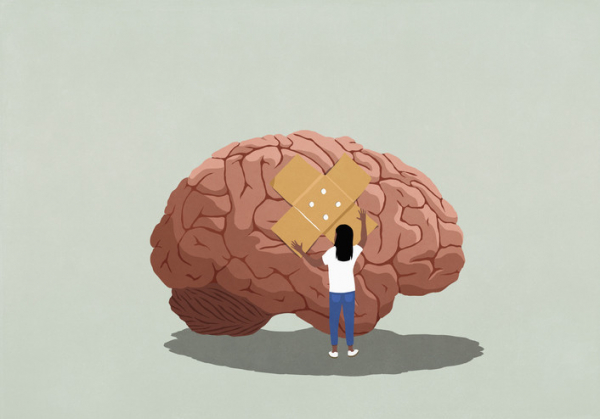
Concussion in children: What to know and do

Concussion is one of the most common injuries to the brain, affecting about two million children and teens every year. It is a particular kind of injury that happens when a blow to the head or somewhere else on the body makes the brain move back and forth within the skull.
It’s possible to get a concussion after what might seem like a minor injury, like a forceful push from behind, or a collision between two players in a football or soccer game.
What are the signs and symptoms of concussion?
Because the injury may not seem that significant from the outside, it’s important to know the symptoms of a concussion. There are many different possible symptoms, including
- passing out (this could be a sign of a more serious brain injury)
- headache
- dizziness
- changes in vision
- feeling bothered by light or noise
- confusion or feeling disoriented
- memory problems (such as difficulty remembering details of the injury) or difficulty concentrating
- balance or coordination problems
- mood changes.
Some of these are visible to others and some are felt by the person with the concussion. That’s why it’s important to know the signs and to ask all the right questions of a child who has had an injury.
Sometimes the symptoms might not be apparent right away, but show up in the days following the injury. The CDC’s Heads Up website has lots of great information about how to recognize a concussion.
How can further harm to the brain be avoided?
The main reason it’s important to recognize a possible concussion early is that the worst thing you can do after getting a concussion is get another one. The brain is vulnerable after a concussion; if it is injured again, the symptoms can be longer lasting — or even permanent, as in cases of chronic traumatic encephalopathy (CTE), a condition that has been seen in football players and others who have repeated head injuries.
If there is a chance that a child has had a concussion during a sports competition, they must stop playing — and get medical attention. It’s important to get medical attention any time there is concern about a possible concussion, both to be sure there isn’t a more serious brain injury, and to do a good assessment of the symptoms, so that they can be monitored over time. There are some screening questionnaires that are used by doctors that can be used again in the days and weeks after the concussion to see how the child is improving.
What helps children recover after a concussion?
Experts have struggled with figuring out how to protect the brain after a concussion. For a long time, the recommendation was to rest and do very little at all. This meant not doing any exercise, not going to school, not even reading or watching television. As symptoms improved, the restrictions were lifted gradually.
Over time, though, research showed that not only was this much rest not necessary, it was counterproductive. It turns out that getting kids back into their daily lives, and back into being active, is safe and leads to quicker recovery. Experts still recommend rest and then moving gradually back into activities, but the guidelines are no longer as strict as they once were.
One important note: A medical professional should guide decisions to move from rest to light activity, and then gradually from there to moderate and then regular activities based on how the child is doing. This step-by-step process may extend for days, weeks, or longer, depending on what the child needs. Parents, coaches, and schools can help support a child or teen as they return to school and return to activities and sports.
Some children will be able to get back into regular activities quickly. But for others it can take weeks or even months. Schools and sports trainers should work with children to support them in their recovery. Some children develop post-concussive syndromes with headache, fatigue, and other symptoms. This is rare but can be very disabling.
How can parents help prevent concussions?
It's not always possible to prevent concussions, but there are things that parents can do:
- Be sure that children use seat belts and other appropriate restraints in the car.
- Have clear safety rules and supervise children when they are playing, especially if they are riding bikes or climbing in trees or on play structures.
- Since at least half of concussions happen during sports, it’s important that teams and coaches follow safety rules. Coaches should teach techniques and skills to avoid dangerous collisions and other injuries. Talk to your child’s coaches about what they are doing to keep players safe. While helmets can prevent many head injuries, they don’t prevent concussions.
About the Author

Claire McCarthy, MD, Senior Faculty Editor, Harvard Health Publishing
Claire McCarthy, MD, is a primary care pediatrician at Boston Children’s Hospital, and an assistant professor of pediatrics at Harvard Medical School. In addition to being a senior faculty editor for Harvard Health Publishing, Dr. McCarthy … See Full Bio View all posts by Claire McCarthy, MD

Does your child need to bathe every day?

The daily bath or shower is a routine for many of us — and for our children, too. But is it really necessary?
The short answer is no.
Obviously, there are days when washing up makes good sense — like if your child is grimy from a day in the dirt; covered in sweat, paint, or other visible dirt; or had an explosive poop. It’s also a good idea to wash up if your child has spent the day in a pool (the chlorine may be irritating to the skin), a body of water (there could be things in the water that are irritating or unhealthy), or used bug spray to ward off ticks and mosquitoes. And certainly, it’s best for everyone in the vicinity when a stinky teenager takes a soapy shower.
Sometimes a doctor may recommend daily bathing for certain skin conditions. And we all need to wash our hands regularly to prevent infection. But full-body washing just for the sake of washing? Not so much.
Why not bathe a child daily?
Lots of bathing can lead to dry, irritated skin. But also, the skin has natural protective oils, and natural bacteria, that help to keep us healthy and safe — and that can get washed away with daily bathing.
If your baby or preteen looks pretty clean, isn’t stinky, isn’t covered in bug spray, and hasn’t been in a pool or other body of water, it’s fine to skip the bath or shower. Really, bathing two or three times a week is fine. In fact, for many kids, even just once or twice a week is fine. You can always do a quick wipe with a wet washcloth to the face, groin area, and any dirty spots.
Stinky teenagers might need more bathing or showering, depending on activity level and deodorant use. But even they may be able to get away with washing their face and using a soapy washcloth on their groin and underarms.
Tips for healthy bathing
When you do bathe children, here are some tips for healthy bathing.
- Don’t use hot water — use warm water instead.
- Keep it short — preferably just enough time to get the washing done.
- Avoid antibacterial soaps and bubble baths. Use mild, unscented soap and shampoo.
- Make sure bathing is supervised for all babies and young children.
- Pat dry rather than rubbing dry. If your child tends to have dry skin, using a mild, unscented greasy moisturizer after the bath can be helpful.
If your child has eczema or any other skin condition, check with your doctor to get tailored advice for bathing your child.
About the Author

Claire McCarthy, MD, Senior Faculty Editor, Harvard Health Publishing
Claire McCarthy, MD, is a primary care pediatrician at Boston Children’s Hospital, and an assistant professor of pediatrics at Harvard Medical School. In addition to being a senior faculty editor for Harvard Health Publishing, Dr. McCarthy … See Full Bio View all posts by Claire McCarthy, MD

How well do you worry about your health?

Don’t worry. It’s good advice if you can take it. Of course that’s not always easy, especially for health concerns.
The truth is: it’s impossible (and ill-advised) to never worry about your health. But are you worrying about the right things? Let’s compare a sampling of common worries to the most common conditions that actually shorten lives. Then we can think about preventing the biggest health threats.
Dangerous but rare health threats
The comedian John Mulaney says the cartoons he watched as a child gave him the impression that quicksand, anvils falling from the sky, and lit sticks of dynamite represented major health risks. For him (as is true for most of us), none of these turned out to be worth worrying about.
While harm can befall us in many ways, some of our worries are not very likely to occur:
- Harm by lightning: In the US, lightning strikes kill about 25 people each year. Annually, the risk for the average person less than one in a million. There are also several hundred injuries due to nonfatal lightning strikes. Even though lightning strikes the earth millions of times each year, the chances you’ll be struck are quite low.
- Dying in a plane crash: The yearly risk of being killed in a plane crash for the average American is about one in 11 million. Of course, the risk is even lower if you never fly, and higher if you regularly fly on small planes in bad weather with inexperienced pilots. By comparison, the average yearly risk of dying in a car accident is approximately 1 in 5,000.
- Snakebite injuries and deaths: According to the Centers for Disease Control and Prevention, an estimated 7,000 to 8,000 people are bit by poisonous snakes each year in the US. Lasting injuries are uncommon, and deaths are quite rare (about five per year). In parts of the country where no poisonous snakes live, the risk is essentially zero.
- Shark attacks: As long as people aren’t initiating contact with sharks, attacks are fairly uncommon. Worldwide, about 70 unprovoked shark attacks occur in an average year, six of which are fatal. In 2022, 41 attacks occurred in the US, two of which were fatal.
- Public toilet seats: They may appear unclean (or even filthy), but they pose little or no health risk to the average person. While it’s reasonable to clean off the seat and line it with paper before touching down, health fears should not discourage you from using a public toilet.
I’m not suggesting that these pose no danger, especially if you’re in situations of increased risk. If you’re on a beach where sharks have been sighted and seals are nearby, it’s best not to swim there. When in doubt, it’s a good idea to apply common sense and err on the side of safety.
What do Google and TikTok tell us about health concerns?
Analyzing online search topics can tell us a lot about our health worries.
The top Google health searches in 2023 were:
- How long is strep throat contagious?
- How contagious is strep throat?
- How to lower cholesterol?
- What helps with bloating?
- What causes low blood pressure?
Really? Cancer, heart disease and stroke, or COVID didn’t reach the top five? High blood pressure didn’t make the list, but low blood pressure did?
Meanwhile, on TikTok the most common topics searched were exercise, diet, and sexual health, according to one study. Again, no top-of-the-list searches on the most common and deadly diseases.
How do our worries compare with the top causes of death?
In the US, these five conditions took the greatest number of lives in 2022:
- heart disease
- cancer
- unintentional injury (including motor vehicle accidents, drug overdoses, and falls)
- COVID-19
- stroke.
This list varies by age. For example, guns are the leading cause of death among children and teenagers (ages 1 to 19). For older teens (ages 15 to 19), the top three causes of death were accidents, homicide, and suicide.
Perhaps the lack of overlap between leading causes of death and most common online health-related searches isn’t surprising. Younger folks drive more searches and may not have heart disease, cancer, or stroke at top of mind. In addition, online searches might reflect day-to-day concerns (how soon can my child return to school after having strep throat?) rather than long-term conditions, such as heart disease or cancer. And death may not be the most immediate health outcome of interest.
But the disconnect suggests to me that we may be worrying about the wrong things — and focusing too little on the biggest health threats.
Transforming worry into action
Most of us can safely worry less about catching something from a toilet seat or shark attacks. Instead, take steps to reduce the risks you face from our biggest health threats. Chipping away at these five goals could help you live longer and better while easing unnecessary worry:
- Choose a heart-healthy diet.
- Get routinely recommended health care, including blood pressure checks and cancer screens, such as screening for colorectal cancer.
- Drive more safely. Obey the speed limit, drive defensively, always wear a seatbelt, and don’t drive if you’ve been drinking.
- Don’t smoke. If you need to quit, find help.
- Get regular exercise.
The bottom line
Try not to focus too much on health risks that are unlikely to affect you. Instead, think about common causes of poor health. Then take measures to reduce your risk. Moving more and adding healthy foods to your meals is a great start.
And in case you’re curious, the average number of annual deaths due to quicksand is zero in the US. Still a bit worried? Fine, here’s a video that shows you how to save yourself from quicksand even though you’ll almost certainly never need it.
About the Author

Robert H. Shmerling, MD, Senior Faculty Editor, Harvard Health Publishing; Editorial Advisory Board Member, Harvard Health Publishing
Dr. Robert H. Shmerling is the former clinical chief of the division of rheumatology at Beth Israel Deaconess Medical Center (BIDMC), and is a current member of the corresponding faculty in medicine at Harvard Medical School. … See Full Bio View all posts by Robert H. Shmerling, MD
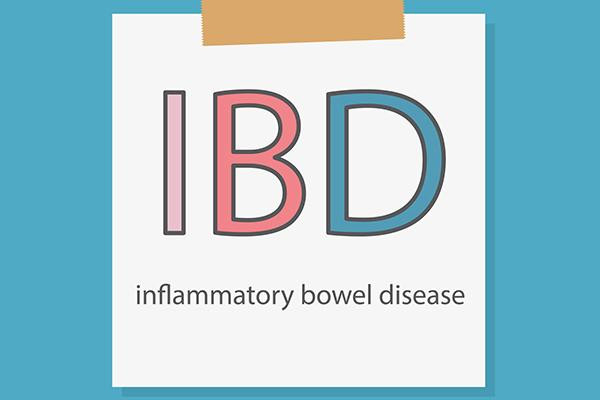
Can probiotics help calm inflammatory bowel disease?

Approximately three million Americans have inflammatory bowel disease (IBD). IBD is an umbrella term for Crohn’s disease and ulcerative colitis, illnesses marked by chronic or repeated bouts of inflammation in the digestive tract. Both types of IBD represent a complex interplay of genes, environment, and immune factors.
Current therapies for IBD suppress the immune system to reduce inflammation. But emerging research on the human microbiome may help scientists better understand and manage IBD. And some preliminary studies on cells, animals, and humans have investigated whether probiotics — which are sometimes called “good” bacteria — are beneficial for people with IBD.
The healthy microbiome: Building a barrier
The human intestinal microbiome is the vast community of trillions of helpful and harmful bacteria, viruses, fungi, and other microorganisms that inhabit our gut. Ideally, the lining of the gut acts as a barrier that prevents harmful bacteria and toxins from entering the bloodstream.
A healthy microbiome helps this lining block out harmful bacteria while enabling it to absorb nutrients. Beneficial bacteria in the microbiome promote a healthy, hospitable gut environment that limits inflammation and helps crowd out harmful bacteria.
Recent studies on human cells and in mice suggest that a healthy microbiome produces substances that
- nourish cells lining the colon, so that they form a tight barrier difficult for harmful bacteria to penetrate
- interact with immune cells in the gut, reducing inflammation
- prompt the gut lining to make mucus that acts as an additional barrier to harmful bacteria.
In animal studies, a healthy microbiome is essential to help build and maintain an effective barrier. Animals raised in the laboratory without a microbiome, or whose microbiome has been depleted by antibiotics, have intestinal linings that are easily damaged.
An unbalanced microbiome: Inflammation and damage
What happens if the microbiome doesn’t have a good balance of helpful and harmful bacteria? The gut lining may become increasingly permeable. That may allow potentially harmful bacteria and their toxins to cross into the intestinal tissue and then into the bloodstream, triggering inflammation that can damage the gut.
An imbalanced microbiome is known as dysbiosis. And the inflammatory cascade linked to dysbiosis is a hallmark of IBD.
Probiotics: More promise than evidence
Probiotics — live microorganisms in supplements or in fermented foods like kombucha, kefir, yogurt, and sauerkraut — have been proposed as therapies for IBD. The idea is that by eating beneficial bacteria we can restore and maintain a balanced microbiome, reduce inflammation, and improve the gut barrier. But what does the evidence say?
Thus far, no probiotic therapy is routinely prescribed for IBD. Small randomized studies have compared specific probiotics with standard immunosuppressive therapies for IBD. The studies measured IBD symptoms, remission rates, or quality of life. Results were mixed at best:
- Ulcerative colitis. Some studies suggest that certain bacterial strains, such as Bifidobacteria and Lactobacilli, are somewhat effective for ulcerative colitis, reducing symptoms, promoting remission, and improving quality of life. But these effects are modest compared to standard therapies, and probiotics have not shown enough benefit to be accepted in medical practice.
- Pouchitis. Some people with IBD may need surgery to remove the colon (large intestine). This can lead to inflammation in the remaining small intestine, which gets formed into a J-shaped pouch and attached to the anus. However, 25% to 45% of people who have a J-pouch later experience inflammation known as pouchitis. Several studies show that combining standard medication with a probiotic mix called VSL#3 effectively quells the symptoms and inflammation of pouchitis. VSL#3 contains eight strains of bacteria. It is used to treat chronic pouchitis, which is the only accepted use of probiotics in common practice for IBD.
- Crohn’s disease. Probiotics have not been studied as rigorously in Crohn’s disease as in ulcerative colitis. Most of the limited set of studies found that probiotics are no better than placebo in reducing symptoms or promoting remission.
Diet, fiber, and prebiotics: A role in IBD?
The makeup and activity of our microbiomes can be altered by diet. That’s true even if the foods you consume aren’t well-known probiotic stars like kombucha, yogurt, kefir, and other fermented foods.
Gut bacteria that break down dietary fiber are a cornerstone of a healthy microbiome. A high-fiber diet can boost the number of these bacteria, as well as their beneficial and anti-inflammatory effects.
Food ingredients that are not absorbed by the gut but are instead consumed by the gut microbiome are called prebiotics. We have limited — though promising — evidence supporting prebiotics for people with IBD. Currently, no specific prebiotic food or supplement is recommended for general use.
However, the Mediterranean diet, which encourages fiber-rich vegetables, whole grains, and legumes, may modestly reduce symptoms and markers of inflammation in IBD. While these effects are small and inconsistent, the Mediterranean diet improves overall health in people with or without IBD. Largely for this reason, the American Gastroenterology Association recommends it for people who have IBD.
The bottom line
Probiotics, and possibly even prebiotics, hold promise. But we don’t yet know how to harness their full potential for treating IBD. While current evidence suggests probiotics may one day be an effective way to help treat IBD, the complexity of the microbiome means that a one-size-fits-all approach is unlikely to work.
Many questions remain: Which strains of bacteria in the gut should we study? How do we determine the best cocktail of probiotics to reap maximum benefit? Given that everyone’s microbiome is different, is a personalized approach to probiotics the right strategy? How can we define ideal dosage and formulation of probiotics?
Delivery method (capsules, powders, foods), dosage, and duration of treatment all require more research. Until these questions are answered, probiotics and prebiotics remain complementary strategies in treating IBD alongside standard immunosuppressive therapies.
About the Authors

Jake Dockterman, MD, PhD, Contributor
Dr. Jake Dockterman is from Carlisle, MA and earned his bachelor’s degree in molecular and cellular biology from Harvard College. He completed his MD and PhD in immunology at Duke University, studying host-microbe interactions and mucosal … See Full Bio View all posts by Jake Dockterman, MD, PhD 
Loren Rabinowitz, MD, Contributor
Dr. Loren Rabinowitz is an instructor in medicine Beth Israel Deaconess Medical Center and Harvard Medical School, and an attending physician in the Inflammatory Bowel Disease Center at BIDMC. Her clinical research is focused on the … See Full Bio View all posts by Loren Rabinowitz, MD